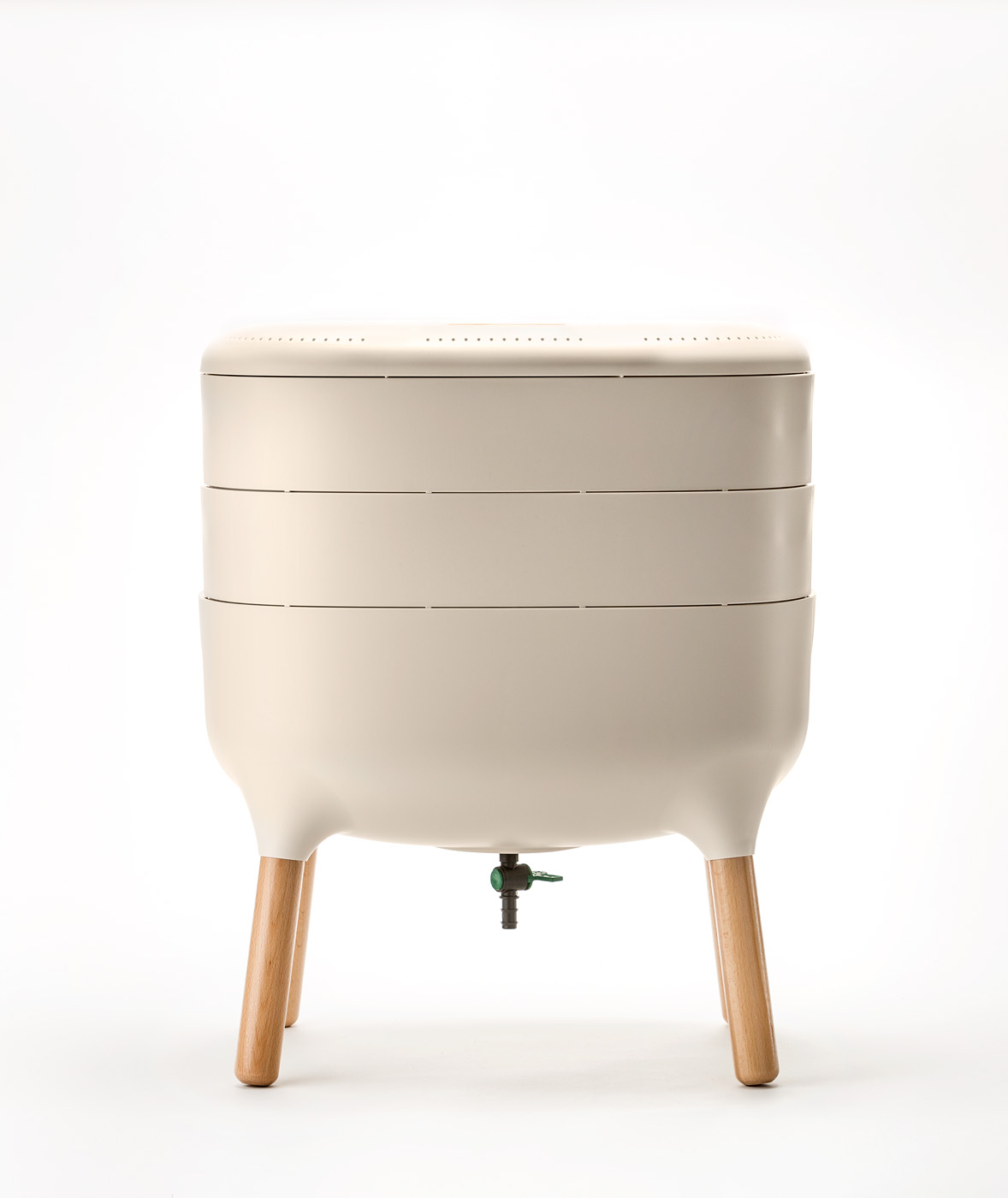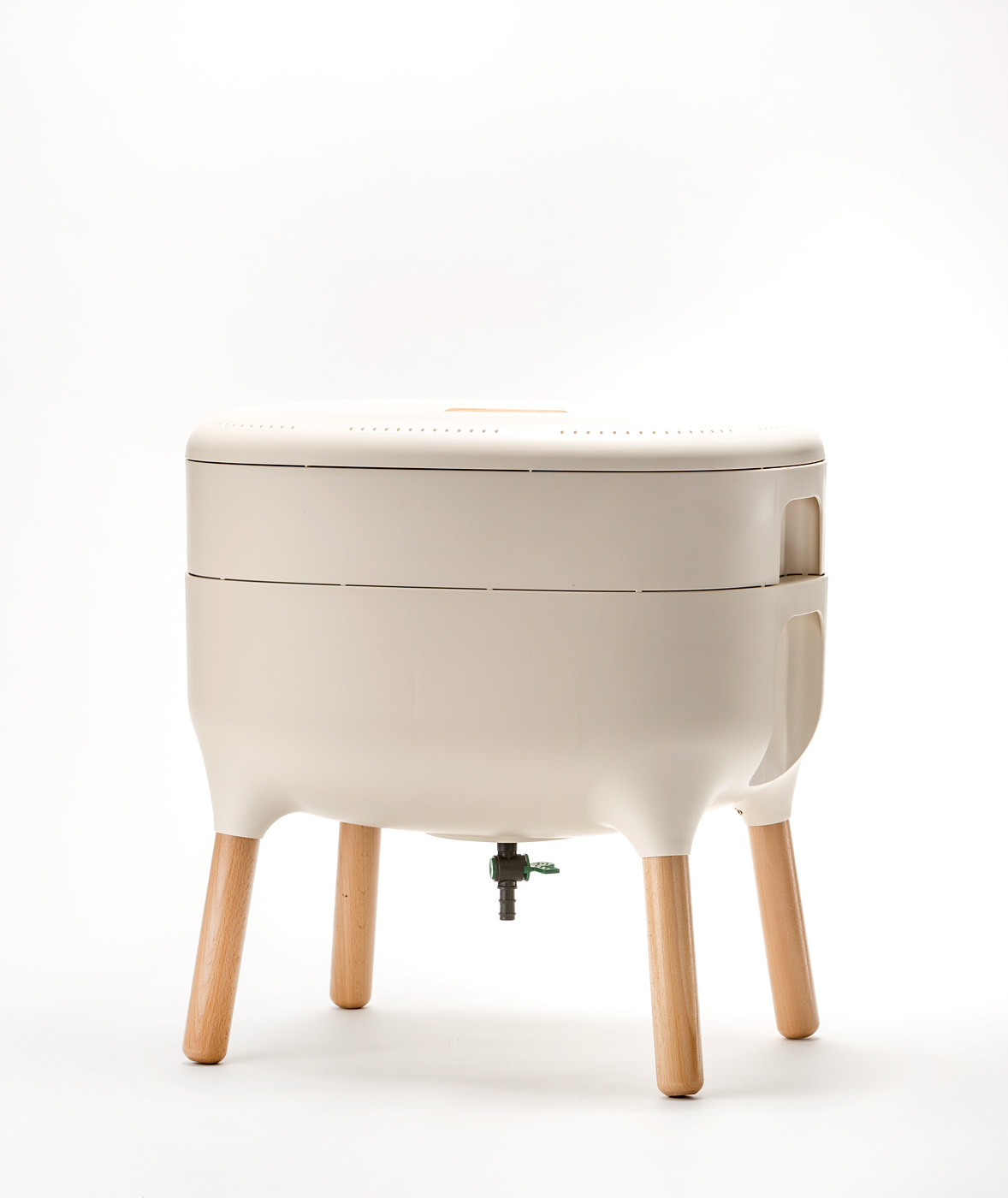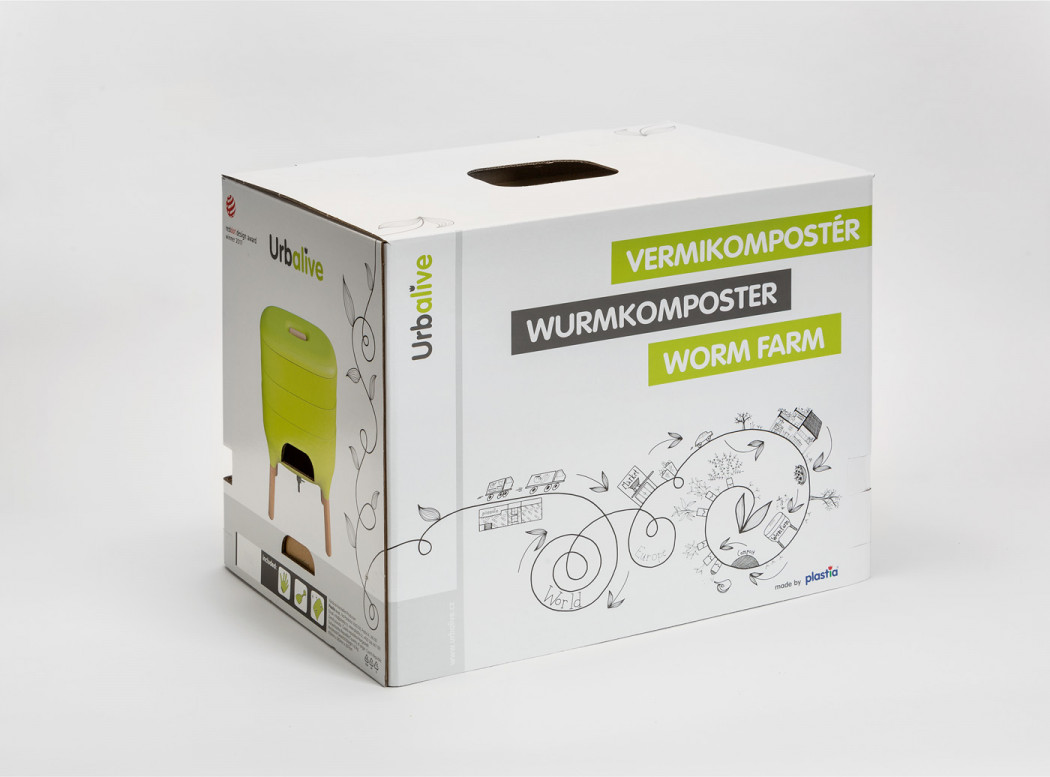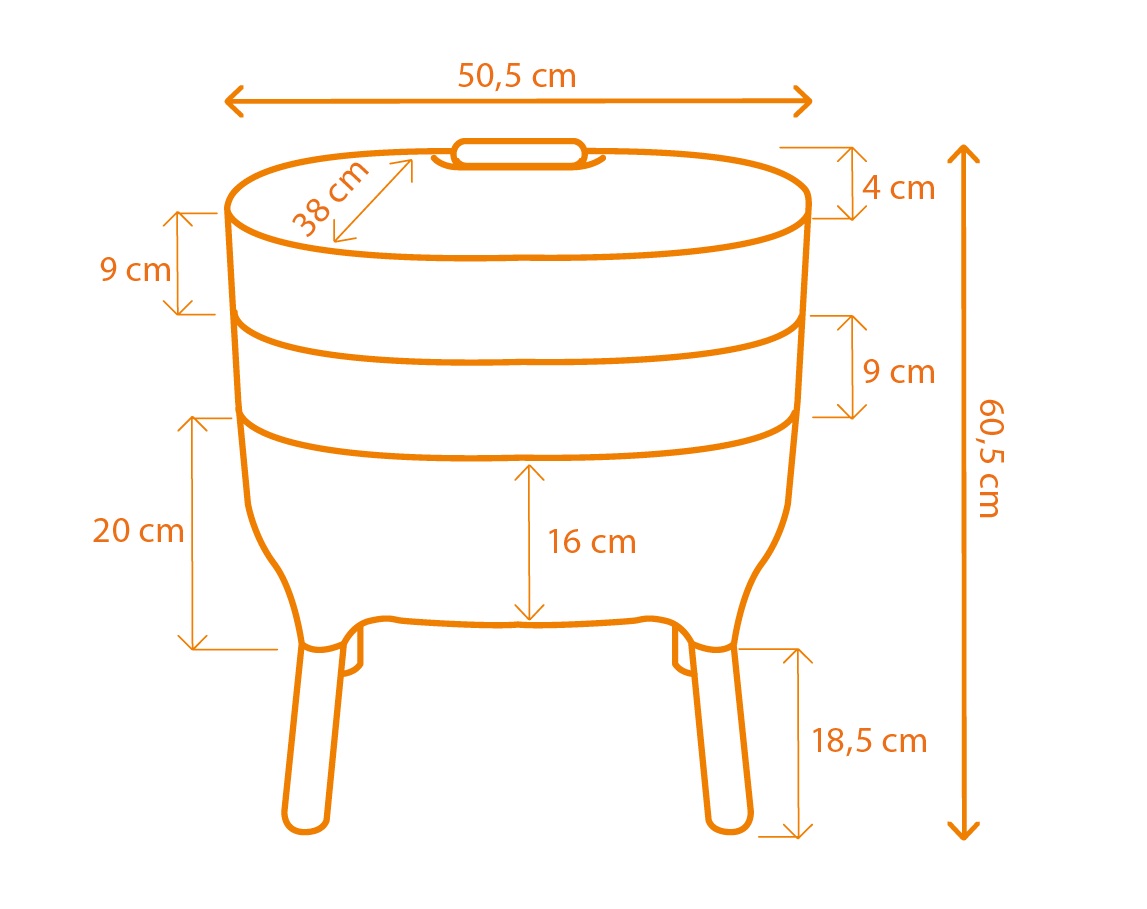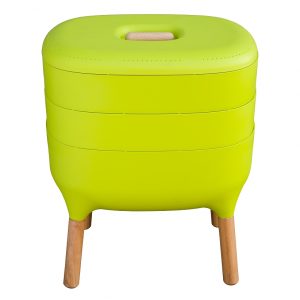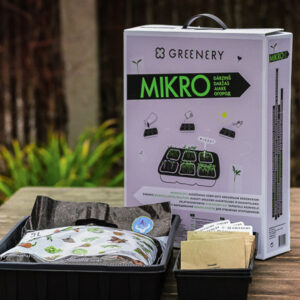Description
Its modern design is the work of leading Czech designer Jiří Pelcl. Made up of composting layers where earthworms help create vermicompost, and a container into which the worm tea flows. Vermicompost contains efficient enzymes and natural growth hormones. Worm tea is an excellent liquid fertilizer rich in nutrients and enzymes that help plants grow.
Type: VERMIkompostētava
Producer: Urbalive
Color: ivory
Weight: 6.65kg
Height: 60.5cm
Width: 50.5cm
Depth: 38cm
Advice
How to Use the Urbalive Vermicomposter
What is vermicomposting?
A method of composting in which earthworms take care of peels, teabags and other bio-waste from your household. Using a special vessel, the earthworms turn the waste into a vermicompost that is similar in texture to peat, over the course of a few months. Additionally, you obtain a liquid called worm tea. But the vermicompost and worm tea are excellent fertilizers, with high content of enzymes and hormones that promote growth and protect plants from diseases. You can use them to fertilize herbs as well as indoor and outdoor plants.
Why to compost at home?
- 40 to 60 percent of household waste is compostable.
- Bio-waste doesn’t end up in a dump or incinerator (where it doesn’t belong).
- You save money for fertilizers and provide your plants with nutrients without chemicals.
- You gain a fertilizer with high content of nutrients and enzymes for optimal plant growth.
- You benefit from a year-around supply of compost for your plants.
- Your kids and grandkids gain practical knowledge of life cycles.
What goes in a vermicomposter:
- Peels and leftovers of fruits and vegetables (for example potato peels, apple cores, green tops, etc.)
- Tea bags (earthworms often like to reproduce in them, so don’t forget them)
- Coffee grounds, coffee filters
- Leftovers of boiled vegetables
- Crushed eggshells
- Paper napkins
- Dampened paper carton
- Dry baked goods
- Leftovers of house or outdoor plants
TIP: Chop large pieces into smaller, so the worms can better process them.
What doesn’t go in a vermicomposter:
- Flavor-intensive foods such as ginger or an excessive amount of citrus
- Milk products
- Meat products
- Bones
- Oil, lard and other fats
TIP: In the beginning of composting, don’t dispose of leftovers of stalk vegetables or potato peels. The initial small number of worms cannot process them with their enzymes and such leftovers may smell.
Where to put the Urbalive vermicomposter?
The Urbalive vermicomposter can stand in the kitchen, on a balcony, in a hallway, a garage, as well as either a classroom or office. If you maintain a few simple rules, you needn’t worry about the contents of the vermicomposter smelling badly.
Earthworms prefer a temperature around 20° C. In the winter, don’t leave the vermicomposter outside without insulation, to prevent freezing. In the summer, avoid direct sun, where it may overheat and dry up. The temperature in the vermicomposter should not drop below 5° C or exceed 25° C.
Check for a correct moisture level in the vermicomposter by taking a handful of the composted material and pressing it firmly in your palm. If a few droplets of water appear, the moisture level is ideal. If more water appears, you should dry the compost with shredded paper or cartons. If water drops fail to appear, moisten the compost with a water spray or by adding dampened shredded paper or carton from a box or egg crate.
How to use vermicompost and worm tea:
Vermicompost is the best fertilizer you can give your plants. It contains efficient enzymes and natural growth hormones. It is added to soil in planters of indoor plants or directly on the plant bed. If you mix vermicompost with soil, you can use it as a classic substrate. It’s also effective as a starter for the plant germination process.
Earthworm tea is an excellent liquid fertilizer for herbs and indoor plants as well as in the garden. It contains high levels of nutrients and enzymes that promote growth and help build plant resistance against pests. You can tap off the earthworm tea into a plastic or glass bottle. It’s best diluted with water at a 1:1 ratio. Use this diluted earthworm tea to water plants or spray on their foliage.
How to clean your vermicomposter:
When you tap off the earthworm tea from the vermicomposter, wash out the bottom part with the release valve. Also wash the tray from which you took processed compost. Both parts can be washed with any dish soap and thoroughly rinsed.
When it doesn’t work as it should…
The Vermicomposter Creates Odor: A properly maintained vermicomposter has no unpleasant smell. If odor appears, it’s most often because the earthworms can’t manage to process all the bio-waste, so lower the amount. Unprocessed waste also causes high humidity of the composted material that then rots and causes odor. Dry the contents of the vermicomposter with pieces of shredded paper, newspaper, cartons or paper egg crates. Another reason for unpleasant odor may be remnants of stalk vegetables or potatoes. These are best introduced into composting only after a few months, when the earthworms are sufficiently active for timely processing.
Lack of Earthworms: A lack of earthworms is a signal that the earthworms aren’t breeding in the vermicomposter, because they don’t feel well in it. Change the composition of bedding and bio-waste and fine-tune the moisture level of the composted material.
Too Many Earthworms: If you have too many small earthworms in your vermicomposter, you can give them away. You can also let us know and we’ll be happy take care of your earthworms. You shouldn’t let them out because they may not be a native species and are not used to cold, so they wouldn’t survive a winter.
Earthworm Drop-Through: In case some earthworms dropped through to the bottom part of the composter, return them to the composting tray (B1) and check that the grille with the textile is properly placed.
Mold: Should mold appear in the vermicomposter, it is most often because the earthworms can’t manage to process the bio-waste, so decrease its amount. Remove the moldy pieces. If there is only a small amount of mold, simply cover it with a layer of composted bio-waste.
The Vermicomposter Mix Is Too Moist: Should the vermicomposter material be too moist, add pieces of shredded paper, newspaper or paper egg crates. Leave the lid slightly ajar until moisture levels drop.
The Vermicomposter Mix Is Too Dry: Should the vermicomposter material become too dry, moisten it with a water spray or pieces of shredded dampened paper, newspaper or paper egg crates.
Earthworms Escape: When earthworms have plenty of moisture and food, they have no reason to leave. Even then, should this happen, make sure the vermicomposter isn’t too dry and, if so, moisten it with a water spray or pieces of dampened paper. Further check that all parts of the vermicomposter fit tightly. Earthworms have no means to escape a properly assembled Urbalive vermicomposter.
Holiday
Holidays are no problem. Earthworms can easily survive for two weeks without food. But they only survive without food up to four weeks.




